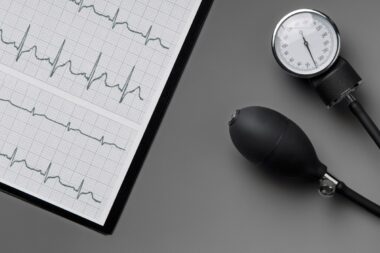Pain is your body’s emergency broadcast system, demanding attention rather than silence. Yet we’ve been conditioned to push through discomfort and treat pain as an inconvenience rather than vital information. This fundamental misunderstanding leads countless people down a path of chronic dysfunction and preventable decline.
Here are some misconceptions about pain and inflammation that show how these interconnected processes represent the difference between quick recovery and chronic limitation.
Pain as Information, Not Punishment
Pain is fundamentally a perceptual experience processed in the brain. You are the only person who can experience your pain, making you the most critical observer of your body’s condition. But here’s what most people miss: pain is a lagging indicator. By the time you feel pain, tissue damage has already occurred. Ignoring pain isn’t stoic, it’s self-destructive.
Consider the gradual onset of chronic pain. It starts barely noticeable: slight morning stiffness, a nagging ache during specific movements. Because it’s manageable, people ignore it. The body adapts with compensation patterns while the underlying problem compounds. Then one day, the pain becomes acute and debilitating. They wonder what caused this sudden injury, not realizing it’s been building for months or years.
This is the “it’s not that bad” syndrome. Pain tolerance shouldn’t be confused with the absence of injury. Pain lasting more than a few days rarely resolves on its own and usually warrants medical attention. Much of today’s chronic musculoskeletal pain stems from poor mechanics and faulty movement patterns that developed because earlier warning signs were ignored.
Acute Versus Chronic Pain
Acute pain typically results from trauma, such as bumps, bruises, sprains, strains, fractures, and dislocations. Tissue damage occurs, inflammation begins as part of the healing process, and, with proper treatment, resolution follows a predictable timeline.
Chronic pain tells a different story. This persistent discomfort is driven by inflammation and a hypersensitive nervous system rather than ongoing tissue damage. When pain becomes chronic, it can rewire the brain to become more sensitive long after the initial injury heals.
People who experience pain for longer than three to six months often develop changes that reduce their functional capacity. This can make them increasingly apprehensive about movement, creating a vicious cycle of avoidance and inactivity.
The key insight: healing is motion-dependent. Chronic pain has less to do with tissue damage and more to do with nervous system sensitivity. Recovery requires getting active and moving at comfortable levels without fear. Physical health and fitness support mental and emotional health, creating an upward spiral.
Warning Signs to Watch For

Medical professionals look for red flags indicating serious conditions: pain at night, pain at rest, and unexplained weight loss. These warrant immediate evaluation as they may indicate cancer or systemic disease.
Yellow flags point to psychosocial factors predicting poorer outcomes, such as believing pain is harmful and activity should be avoided, depression, work-related stress, anxiety, lack of social support, and chronic recurring pain despite treatment. Recognizing these allows for comprehensive treatment that addresses both physical and psychological dimensions.
The Inflammation Connection
If pain is the alarm, inflammation is often the fire that triggered it. Acute inflammation is the body’s natural healing response, and this beneficial inflammation resolves as healing progresses. Chronic inflammation is entirely different. It actively damages tissues and promotes disease by eating processed foods, exposure to environmental toxins, chronic stress, inadequate sleep, and excess body fat, which secretes pro-inflammatory compounds.
The relationship between inflammation and osteoarthritis illustrates this perfectly. For decades, doctors promoted a wear-and-tear model, telling patients that cartilage inevitably breaks down and activity should be limited. Modern research has debunked this, showing that osteoarthritis has multifactorial causes, with metabolically triggered inflammation playing a central role.
Studies show increased body fat directly links to systemic inflammation and inflammatory cytokines migrating to joints. Obesity, metabolic syndrome, and type 2 diabetes increase osteoarthritis risk, with inflammation the primary factor rather than mechanical wear.
Remarkably, ultramarathon runners completing a 4,400-kilometer race showed no significant cartilage softening. Joint cartilage possesses regenerative properties when properly loaded, recovered, and nourished. The key is to create conditions that support this natural process.
The Dietary Dimension
The most powerful intervention for managing inflammation involves what we eat. The Standard American Diet promotes chronic inflammation through refined sugars, high-fructose corn syrup, processed oils, trans fats, and refined grains, creating cascades contributing to heart disease, chronic pain, cancer, and diabetes.
Decreased sex drive, depression, mood swings, and sugar cravings aren’t normal aging, they indicate dysfunction and persistent inflammation. The anti-inflammatory approach emphasizes wild-caught fish, grass-fed meats, colorful vegetables, nuts, olive oil, and anti-inflammatory spices.
The Role of Medications
NSAIDs like ibuprofen can help acute inflammation but carry long-term risks: gastrointestinal bleeding, cardiovascular problems, and kidney damage. Corticosteroids are effective for acute inflammation but are catabolic, breaking down tissues and suppressing the immune system. Long-term use causes fluid retention, weight gain, elevated blood sugar, weakened bones, and increased infection risk.
Medications have their place for severe acute pain or enabling rehabilitation participation, but rarely work well alone. The most effective approach combines short-term pain management with manual therapy, addressing structural misalignment, soft tissue injury techniques, and fully rehabilitating underlying conditions with mobility and stability movement-based training.
Take Action Early
The path through pain and inflammation requires understanding that your body is communicating valuable information. Ignoring pain leads to chronic problems. Addressing only symptoms provides temporary relief but does not solve underlying issues. The most effective approach combines accurate diagnosis, appropriate intervention for structure and function, dietary strategies to reduce inflammation, stress management, and progressive movement.
Chronic pain lasting 3 to 6 months or longer can decrease functional capacity and induce neuroplastic changes, making the nervous system more sensitive. Early intervention is paramount. When pain appears, view it as your body’s request for attention rather than something to suppress.
Your body keeps score of accumulated stress, mechanical dysfunction, and inflammatory burden. The question isn’t whether you’ll experience challenges; you will. The question is whether you’ll recognize early warning signs, understand what’s driving them, and take appropriate action before minor problems become significant limitations.
Pain and inflammation aren’t enemies; they’re your body’s way of ensuring you pay attention to what needs care. Learn to listen.
Image Credit: Freepik

Dr. Matt Fontaine is a lifelong athlete with over 24 years of experience as a sports chiropractor. His private practice in integrative physical medicine focuses on an accurate diagnosis, rapid recovery, and peak performance. He has served as a sports chiropractor in Major League Baseball and with the ART Ironman Triathlon Medical team. He completed his residency at the Texas Back Institute and has spent the last decade-plus serving a patient community that includes men and women of the U.S. armed forces, veterans, and other governmental agencies. His new book is Only One Body (Adjusted Inkworks, August 19, 2025). Learn more at Dr. Matt Fontaine.




































